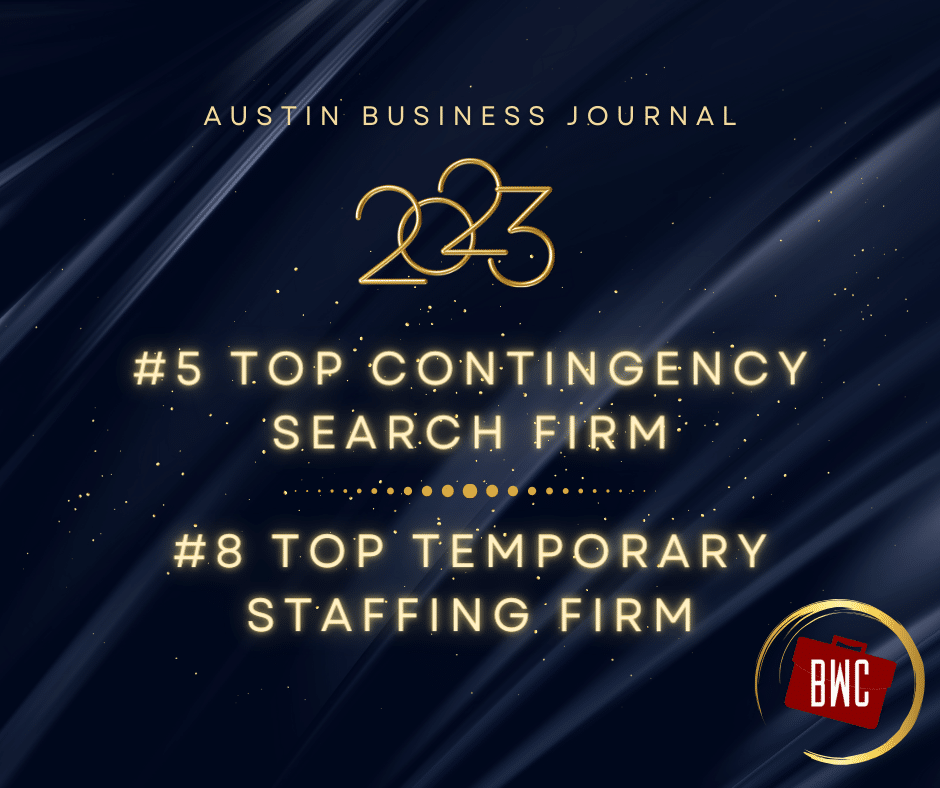The labor market in 2018 is very much unlike anything seen in recent years, perhaps decades. With unemployment in many categories at all-time lows, a booming economy (4.1% growth in 2Q 2018), and more open positions than unemployed people participating in the workforce, 2018 is a great time to be a job seeker and a very difficult time to be hiring top talent.
 This is painfully obvious to employers whose hiring practices are stuck in the 1990’s – they’ve always done it that way and keep trying to do it that way now, but it’s absolutely not working. Gone are the days when “post and pray” and calling a couple of applicants would bring the right talent into your organization. The old recruiting process will not work in 2018 – stop trying antiquated thinking!
This is painfully obvious to employers whose hiring practices are stuck in the 1990’s – they’ve always done it that way and keep trying to do it that way now, but it’s absolutely not working. Gone are the days when “post and pray” and calling a couple of applicants would bring the right talent into your organization. The old recruiting process will not work in 2018 – stop trying antiquated thinking!
It’s time to completely reinvent the talent acquisition function across industries, job families, and leadership levels. Dozens of research reports and “stories from reality” have indicated that the war for talent is more challenging than (perhaps) ever before. If you’ve gotten the message, great – now let’s take a look at how we can win the talent war, if we’re willing to commit to making that happen.
First, take a look at your internal recruiting organization. No offense to anyone recruiting on the inside (many of us have been there!) but that group simply cannot deliver top candidates in the way that a top recruiting firm or a full RPO (recruiting process outsourcing) solution can. Most companies have an internal recruiting team who believes that recruiting is filtering through applicants who’ve indicated interesting through a job posting, having a 10-minute call and sending a “candidate” forward to the hiring manager for further review. Love to all, but the value-add in that situation is nearly zero.
The candidates who you want to hire are already working for your competitors, probably already earning more than you think you’ll have to pay and are not cruising the job boards searching for your company’s job postings in their spare time.
The first and most important thing that hiring companies should do to obtain top talent in today’s market is to blow up the decades-old Talent Acquisition model and retrain everyone involved in the hiring process, from HR leadership through functional leadership and hiring managers. The internal Talent Acquisition team may be retrained or may be redesigned entirely – but it all needs to be blown up.
Do you defend yourself in lawsuits? Do you treat your own bone fracture? Neither should you pretend that “your team” can do what we, as a recruiting firm, can do. Your internal team is typically neither empowered nor capable (various reasons) of delivering results like those of us for which recruiting is our core competency. Often, that is strikingly obvious from the first intake meeting and the very first candidate submission.
Once you’ve figured that out, make the decision as the hiring manager to partner with outstanding executive search firms for whom recruiting is their core competency and truly treat them as a partner.
Why, that’s heresy you say! Let’s look at some observations from real-world companies and research reports that demonstrate that the script has entirely changed.
Ever heard of Amazon? They have a modest goal to hire 100,000 employees this year. Think that’s ambitious? How about a goal of hiring more than 40,000 employees in a single day! Yes, that was their target earlier this year. I’d guess that’s more than 1,000x what your team is targeting…and you’re likely struggling with that.
So, how’s Amazon working to make this happen? Yes, that’s right. They blew up their old hiring model.
As noted by TED magazine, “Amazon uses RPO because it doesn’t make sense to build up a large, internal recruiting organization; it’s not their core competency…”.
Wow, talent acquisition is NOT their core competency – what an astonishing revelation! Regardless of the size of the company or the numbers involved, talent acquisition is a core competency for only a very few companies, period. Pretending otherwise is a key reason why the recruiting cycle for key positions has grown by more than 50% since 2016. Let that sink in – your cost of a vacancy is growing at an ever-increasing rate as we push through 2018.
Linda D. Henman, Ph.D., of Henman Performance Group notes that, “Most companies are too slow when it comes to hiring,” she acknowledges, “and mainly because they let human resources (HR) create massive processes and hurdles that take forever to get through.” Henman says today’s skilled, talented employees don’t just sit around waiting for job offers. “If your HR process was created back when unemployment rates hovered in the 10-15 percent range, it’s definitely time to rethink them.”
Recruiters face constant “red flag warnings” from client employers mired in antiquated thinking. First among these is probably the most common – and most irrelevant in 2018 – perception of “job hopping” by employers. Henman notes that employers can’t afford to turn away a worker who stays with employers for only three to five years; shorter tenures are now the norm, and employers have been forced to rethink whether job hopping is a red flag.
How do we “now” define job hopping? While it has historically been common for some employers to ignore completely those workers with average job tenure of less than 4-5 years (job hoppers!), that thinking is well out of touch with current realities. The US DOL Bureau of Labor Statistics in 2016 reported that the median tenure of workers between 25 -34 is only 2.8 years. Given the aggressive growth in hiring over the past 2 years and applying the “TTF has grown by 50% since 2016” factor, it seems reasonable to project that the 2018 median tenure for workers 25-34 is now at or below 2 years.
Abandon what “we’ve always done,” blow up talent acquisition legacy processes and reinvent hiring.
A few key observations:
- Recognize the limitations of your internal Talent Acquisition team and partner with an outstanding search firm.
- Hiring in 2018 is vastly different than recruiting in prior years. The ratio of candidates for each available opening in their field is commonly in the range of 5-10 positions for every candidate.
- Companies need to evaluate and reinvent their entire Talent Acquisition function in order to be successful today. Abandon post and pray practices and make recruiting effectiveness a top priority.
- It’s highly likely that Talent Acquisition is not among your firm’s core competencies, so partner with a top executive search firm with the expertise and networks of candidates/firms to deliver for you.
- The long-standing “red flags” for candidates (such as perceived job-hopping) will significantly limit the already limited pool of qualified and available candidates. Abandon these and hire top talent, who cares if they changed jobs twice in the past 3 years if they are otherwise a rock star candidate.
- Move much more quickly! Your top candidate is being courted by many of your competitors, and you no longer have the luxury of interviewing 17 candidates for 6-8 weeks. They’ll be hired within 2-4 weeks, and you’ll have to start over completely. Absolutely not the way to win the war for talent.






Leave A Comment